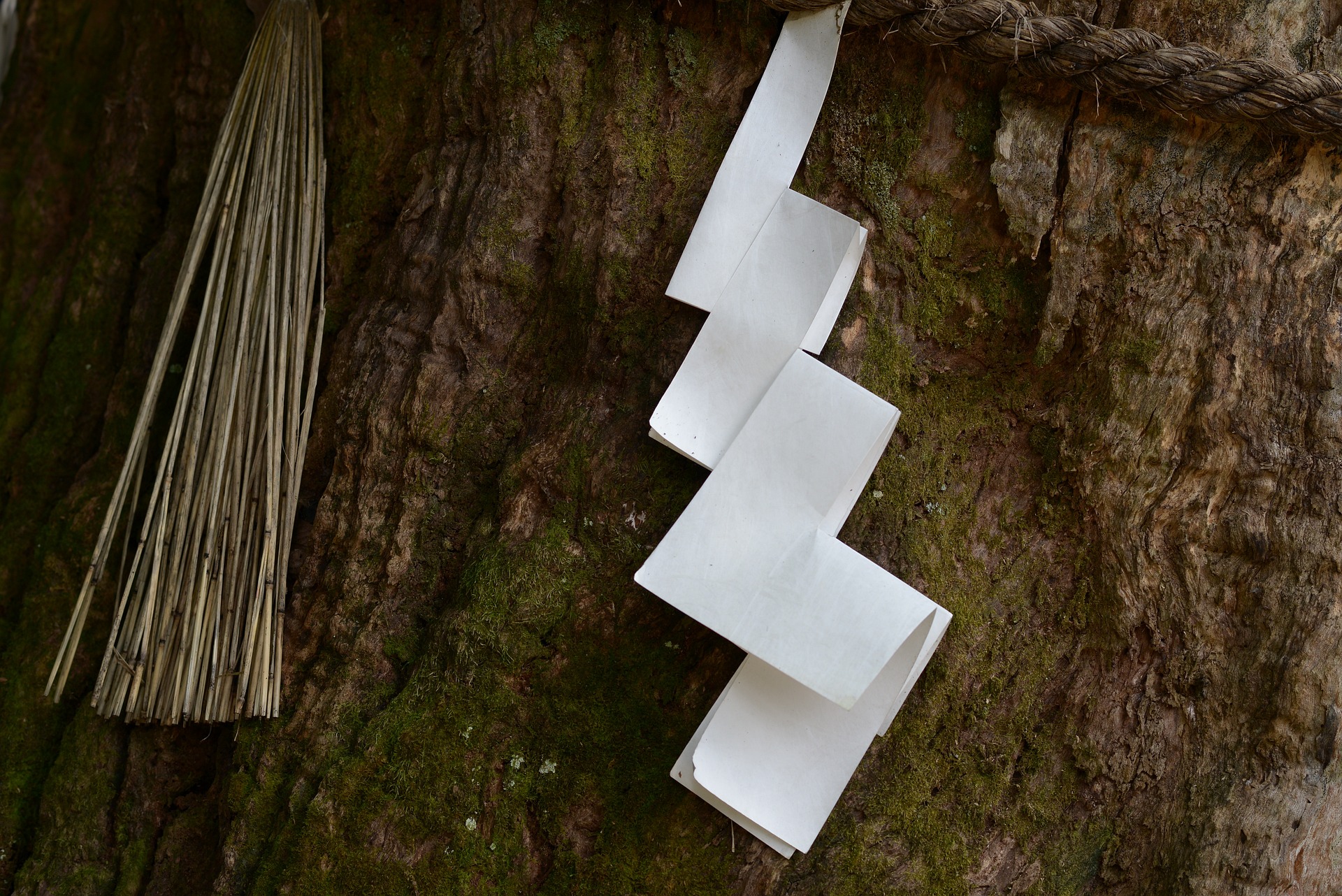The Traditional Japanese Paper Streamers
Konnichiwa! Shide (紙垂) refers to traditional Japanese paper streamers that are used in various ceremonial and religious events. These streamers are often attached to the shimenawa or the sacred ropes used to cordon off holy spaces, such as shrines, temples, and sacred trees. Shide has been an essential part of Japanese culture for centuries, and its history and significance are worth exploring.
History of Shide
The use of paper streamers in Japan dates back to the 8th century. The practice was brought to Japan from China, where it was known as shide. Initially, shide was made of white paper, and it was used to purify spaces and ward off evil spirits. However, over time, the practice evolved, and different colors and designs were introduced.
During the Heian period (794-1185), shide was used in the Shinto religion. Shinto is an indigenous religion in Japan, and it involves the worship of various kami or deities. Shide was used to mark sacred spaces and objects, such as shrines and sacred trees. In the Edo period (1603-1868), shide became more colorful and elaborate, with different shapes and sizes being introduced.

Planning a trip to Japan?
Cultural Significance of Shide
Shide is an essential part of Japanese culture, and it has several cultural significances, including:
How Shide Paper Streamers are Made
Shide paper streamers are made using washi, which is traditional Japanese paper made from the bark of the mulberry tree. The paper is first cut into long, thin strips and then folded in a zigzag pattern. The folded paper is then attached to a string or rope, and the ends are trimmed to create the desired shape.
The traditional shide has a triangular shape, but there are other shapes, such as diamond and round, that have been introduced over time. The paper streamers are then dyed in various colors using natural dyes, such as indigo and safflower.
How Shide Paper Streamers are Used Today
Shide paper streamers continue to be used in various religious and cultural events in Japan. Some of the ways in which shide is used today include:
Shide is still used in shrines and temples to mark sacred spaces and objects. The paper streamers are often hung on sacred ropes or trees and are believed to offer protection against evil spirits.
Shide is also used in festivals, such as the Gion Matsuri festival in Kyoto. During the festival, shide is hung on the yamaboko floats, which are used to parade the streets of Kyoto.
Shide is also used in weddings to decorate the wedding venue. The paper streamers are hung on the wedding altar and around the wedding ceremony area, and they are believed to bring good luck to the couple.
During New Year’s celebrations, shide is used to decorate homes and businesses. The paper streamers are often hung on the front doors or gates of homes and are believed to bring good luck and fortune for the new year.
Some people also use shide for personal use. For example, they may hang shide in their homes for decoration or use it to wrap gifts during special occasions.
Examples of Shide in Japanese Culture
Shide paper streamers can be found in various aspects of Japanese culture. Some notable examples include:
The shimenawa is a sacred rope used in Shinto religion to cordon off holy spaces. Shide is often attached to the shimenawa to mark the sacred space and to offer protection against evil spirits.
Sumo wrestling is a traditional Japanese sport, and shide is often used during sumo matches. The paper streamers are hung around the ring to mark the sacred space and to offer protection to the wrestlers.
The Gion Matsuri festival is a famous festival in Kyoto, Japan. During the festival, shide is hung on the yamaboko floats, which are paraded through the streets of Kyoto.
The Meiji Shrine in Tokyo is one of the most famous shrines in Japan, and shide is used extensively in the shrine. The paper streamers are hung on the sacred trees and ropes to mark the sacred space and to offer protection.
Final Thoughts
Shide paper streamers have been an essential part of Japanese culture for centuries. The paper streamers are a symbol of purity, protection against evil spirits, and celebration. Shide is used in various religious and cultural events in Japan and is an important aspect of Japanese tradition. The history and cultural significance of shide are an integral part of Japanese culture, and the use of shide continues to be a vital part of Japanese society today.


One thought on “Shide – The Traditional Japanese Paper Streamers”
Comments are closed.